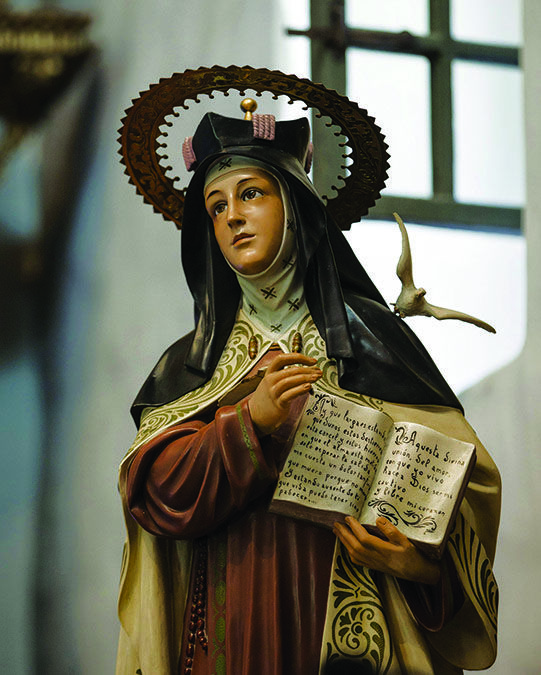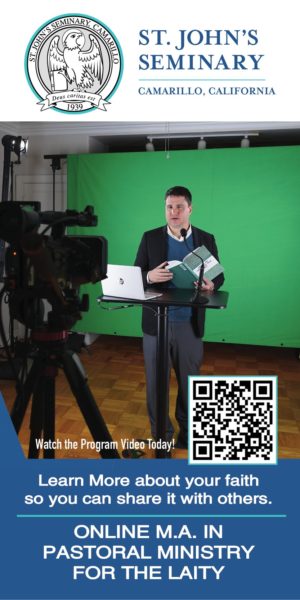One of the most beautiful doctrines of the Catholic Church is the “Communion of Saints.” In fact, we begin the month of November as the Church militant on earth celebrating All Saints’ Day (the Church in glory in Heaven) and commemorating the faithful departed on All Souls’ Day (the Church being purified in Purgatory).
Nov. 1-7 is also celebrated as National Vocations Awareness Week in the United States. In this article we will share the stories of three saints who found the path to holiness through their vocation to the priesthood and religious life.
We believe that there is a natural link between All Saints’ Day and promoting vocations to the priesthood, religious life and permanent diaconate, let alone the universal call to holiness for all the lay faithful. We find holiness by responding to and being faithful to our own particular vocation in the Church.
The saints are men and women of all times, places, cultures, temperaments and historical circumstances who were able to serve Christ and his Church with heroic virtue and perseverance. They provide inspirations and models of Christian living for us in our own times and according to our own individual circumstances.
nSanto Toribio Romo, priest and martyr
Born in 1900, young Father Toribio was ordained a priest in his native Jalisco, Mexico in 1922. He especially loved teaching catechism to the children of his parish.
He was a man of prayer and deep faith. It pained him greatly when persecution by the Mexican government broke out in the country during the Cristero War (1926-1929). Like other priests, he was ordered not to celebrate the sacraments or even pray his beloved rosary in public.
On Feb. 25, 1928, Father Toribio was executed by government troops, dying in the arms of his sister. He was canonized with 24 other Mexican mMartyrs by Pope John Paul II in the year 2000, the centenary of his birth.
Although he only served for six years as a priest here on earth, the witness of his faith and his love for his parishioners stand as a powerful testimony as the Church experiences grave persecution in Syria and Iraq and may other parts of the world. May Santo Toribio Romo intercede for all persecuted Christians, especially those bishops, priests and religious who remain with their people even in the face of daily threats to their lives.
nSt. John Bosco, priest and religious founder
This year is the second centenary of the birth of John Bosco, born and raised on a farm in northern Italy. Unfortunately, like some children experience, he had a difficult relationship with his older brother Antonio, who did not support his desire to go to school.
Their family was poor and Antonio believed that his brother was needed to work on the farm.
Prompted by a dream that he had when he was 9 years old of the need to care for poor children and by his experiences visiting the prisons of Turin as a young priest, Father John Bosco was inspired to begin an apostolate to the multitude of poor kids and youth on the streets of Turin.
Seeking innovative approaches to touching their hearts with the love of Christ, he would meet with the youth where they worked in the shops and factories or in the streets, playing sports and other games with them. Once he gained their confidence and built a rapport with them, this holy priest was able to challenge and inspire them to live more morally upright lives.
These kids began to experience a newfound hope for their future for the first time in their lives. In time was born the Salesian Order as other men (and even some of the newly evangelized kids) joined him in his ministry to these needy youth.
Father John Bosco was inspired by the spirituality of St. Francis de Sales, from whom this new religious order took its name and the foundations of their spirituality. Here in the Archdiocese of Los Angeles, the Salesians of Don Bosco and the Salesian Sisters of St. John Bosco continue his great legacy through ministry in Catholic high schools, parish work and programs for the youth.
May he intercede for all of our Catholic school teachers, catechists, youth ministers, and all who serve young people in the Church.
nSt. Teresa of Avila, Virgin and Doctor of the Church This holy 16th century reformer of the Carmelite order also celebrates a jubilee this year, the fifth centenary of her birth in near Avila, Spain. Teresa was born in 1515, just two years before the beginning of the Protestant Reformation.
These extraordinary circumstances in the history of the Church and in Europe provide the backdrop of the life of this great mystic and master of the spiritual life.
When Teresa was 14 years old her mother died. She was educated by Augustinian nuns at their monastery in Avila, where she soon became very ill.
From this young age she also began to experience the first of many mystical experiences. At age 20, Teresa entered the Carmelite monastery in Avila to begin her religious vocation.
Scandalized by the laxity of the nuns and almost constant visits of the wealthy and political elite, she began the arduous work of reforming the Carmelites. It was not uncommon during those times for the female visitors to even enter the cloister, thereby disrupting the spiritual disciplines of the nuns.
Fortunately, Sister Teresa was not alone in her goal of renewing the religious life of her order. Divine Providence would provide her with many holy collaborators in this work, including three future saints: St. John of the Cross (the reformer of the Carmelite friars); St. Francis Borgia (her confessor); and St. Peter of Alcantara (her spiritual director).
She persevered through numerous obstacles and challenges to eventually found 16 new Carmelite convents throughout Spain over the next 20 years.
In addition to her reform efforts and her own mystical experiences, St. Teresa authored some of the most important books on Christian spirituality in the history of the Church. These works, including her autobiography, “The Interior Castle,” and “The Way of Perfection,” are noted to be among the masterpieces of Spanish literature as well.
And for all of her profound wisdom and spiritual insights, she provides us with many practical examples for daily life as well. For instance, she has this advice about the use of holy water: “I know by frequent experience that there is nothing which puts the devils to flight like holy water.”
So the next time you bless yourself while entering the Church, recall the grace of your baptism and the spiritual protection that this sacramental continues to provide you.
St. Teresa of Avila is a model of courage and trusting in God’s will. In 1970, Pope Paul VI named her the first female Doctor of the Church.
She lived during a time of great change and upheaval in her country and in the Church. May she intercede for us as we navigate the changes and challenges of our own times, both in the Church and in the United States.
Santo Toribio Romo, St. John Bosco and St. Teresa of Avila are only three examples from differing times, places and historical circumstances of the innumerable saints of all time — both officially canonized and those known only to God — who make up the great heroes of the faith in the Church’s Communion of Saints.
It is our hope that National Vocations Awareness Week will stir up in the Church many new vocations to the priesthood, religious life and permanent diaconate. And may they serve the people of God with dedication, pastoral charity and heroic virtues as these saints did.

